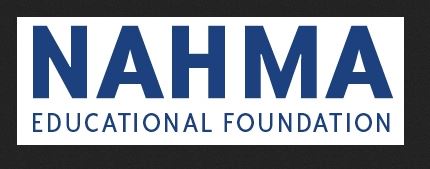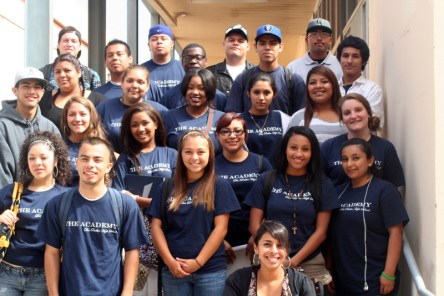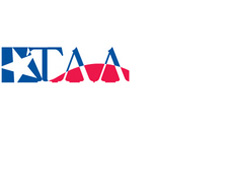The traditional core curriculum for K-12 education comprises “reading, writing and arithmetic,” with science, the arts and health also maintaining a presence. Happy African American student raising her hand to ask a question during lecture in the classroom. Another concentration is joining this essential group: personal finances, a subject that encompasses such concepts as maintaining bank accounts, paying bills on time, creating a household budget, saving for retirement and understanding borrowing rates. Twenty-six U.S. states require or will require high school financial education; personal finance education bills are pending in another 15 states. A new law in California, for example, requires a semester-long personal finance education course to be available for all high school students by the 2027-28 school year, with personal finance a graduation requirement starting with the 2030-31 graduating class. Crucial skills to ‘play the money game’ A growing understanding of the connection between teen comprehension and adult quality of life is driving the surge in early financial education. “When you learn how money works at a young age, you’ll have the necessary skills to make positive financial decisions as an adult. When you’re financially literate, you’re better able to manage the ups and downs of life as they happen — your physical health, mental health and relationships will be better off as a result,” Joe Camberato, CEO and founder of small business loan provider National Business Capital, wrote in Forbes magazine in 2022. Carly Urban, economics professor at Montana State University and a financial literacy expert, says that high school financial instruction has been shown to improve credit scores, lower loan delinquency rates and reduce the accumulation of credit card debt. It also helps position young people to make informed decisions about college loan types and repayment obligations while providing a...
Sharing Literacy
Yardi Colorado Springs + TutorMate
Students third grade academic performance can foreshadow setbacks that they may face in adulthood. Students who cannot proficiently read by the third grade are more likely to struggle in class, drop out of school and face incarceration. TutorMate, an Innovations for Learning program, helps to prepare students for success in school and in adulthood. The program uses technology to pair students with volunteers for remote tutoring sessions. During each 30-minute session, they read stories and play games together that build comprehension and fluency. The program has achieved replicable results, such as an 18-point reading score improvement in Chicago and 14-point reading score gain in Washington, DC. Volunteers from 27 cities representing more than 200 corporations, universities and governmental agencies participate in the program. Nearly 10,000 students benefit from their volunteerism. Amy Thomas, a customer service representative in Yardi’s Colorado Springs office, introduced the program to her colleagues in the summer of 2018. Ten volunteers were needed to kick off the effort – within a day, she had filled the signup roster. The team is working with a school in the Denver area. From their desks, Yardi employees give a half hour of their time once a week to connect with their students. “Reading is essential for success in the future, so this really makes a difference,” said Thomas, who became familiar with the program at a previous job. “Knowing that we’re making a difference in our community, and seeing the progress with your students each week – that’s great for both the employee and the student.” Connections with the first graders are easy and natural, she said. Stephanie Eide, associate technical account manager in Colorado Springs, is among the volunteers. “I have a daughter who is also learning to read so I wanted to help,” said Eide. “I loved reading as a kid, so I love that I can help other kids love it as well. Some kids need more practice and I love that I can offer that to them.” Eide knew that she was paired with the right student when she found out that they shared Halloween birthdays. “I don’t meet very many people that share my birthday. So you also get to be somewhat of a mentor to them as well!” During a typical session, Eide and her student buddy begin with flashcards. They then read a few short stories and complete comprehension questions. “There are also games we play,” said Eide. “Her favorite is tic tac toe. If you can read the word in the box you get an X or O. She usually beats me. It is so much fun. She is very smart and is gets better at reading every week!” Thomas is hoping to introduce other Yardi offices around the country to the nationwide program. For more information about how to participate, you can email her at [email protected] Yardi is Energized for Good – and you can join in! TutorMate is accepting new volunteers. Groups can register to participate in upcoming...
Student Housing
Successes Boost Confidence
Just as industry experts thought the interest in student housing may begin to plateau, the prospects for growth are shining brighter. Investors made $1.1 billion in student housing property transactions in the first quarter of 2017, reports CRBE. This figure excludes portfolio deals, which held their own: Q1 ended with the sale of a $1.6 billion portfolio, which is a great start to the year. Local and foreign investors are showing confidence in the student housing sector. Student housing is historically more stable throughout economic fluctuations. There are fewer enrollment surges during times of prosperity and fewer dips in enrollment during challenging times, reports TH Real Estate. Tom Park, Senior Director, Strategy & Research at TH Real Estate, explains: “Rental growth in the sector has proven to be less volatile than that of conventional apartments – partially as a result of the sector being less economically sensitive. Results for some of the largest players in the market show rental growth volatility, as indicated by the standard deviation, was lower than conventional apartments and capital expenditures are in line with those of conventional apartment.” College enrollments have continued to rise since 2008. Most notably, 2014 ushered in $3.5 billion in sales, topped in 2015 with $6 billion and $10 billion in 2016. The consistent growth contributes to the perception that student housing is a recession-resistance sector. Enrollment in and applications for post-graduate programs are also rising. TH Real Estate estimates that about 3 million students enrolled in post-graduated programs in fall 2016. That figure has consistently risen since 2010 when enrollments maxed at about 2.2 million. Post-graduate studies will extend the demand for student housing Though enrollments continue to grow, state budgets for education are shrinking. Public colleges and universities seek out institutional investors and developers...
Bilingual Brains
Dementia Prevention
Over 60 percent of the world’s population is bilingual, and it’s long been known the capacity to understand two or more languages can help older adults maintain healthy brain function and stave off dementia.. With more than 5 million Americans living with Alzheimer’s, the ability to speak two or more languages isn’t just a party trick… it can be a lifesaver. A 2013 study published in Neurology determined bilingualism could delay onset of dementia by almost 5 years. The study’s authors discovered the bilingual benefit occurs regardless of education, sex or even literacy.Moreover, because bilingual brains are accustomed to understanding more than one language, they are well equipped to manage degeneration and neuron loss by utilizing alternative ways to function. “After years of daily practice managing interference between two languages, bilinguals become experts at selecting relevant information and ignoring information that can distract from a task,” explains Dr. Ana Inés Ansaldo, a researcher at the Centre de recherche de l’Institut Universitaire de gériatrie de Montréal. “In this case, bilinguals showed higher connectivity between visual processing areas located at the back of the brain,” she writes in summary of her research on the differences in brain function between bilingual and monolingual seniors. “Data indicate[s] that the bilingual brain is more efficient and economical, as it recruits fewer regions and only specialized regions.” Multilingual Multitasking Dr. Ansaldo’s research identified two cognitive benefits associated with bilingualism. While monolingual seniors use diverse brain areas when completing cognitive tasks, bilingual adults save resources through centralized and specialized functional connections. Additionally, when completing cognitive tasks bilingual seniors use less of the brain’s frontal regions, which are more vulnerable to aging. Dr. Ansaldo theorizes these benefits are what allow bilingual seniors to stave off dementia and other signs of cognitive aging. “We...
NAHMA Education Foundation
Breaking Boundaries Through Scholarship
The National Affordable Housing Management Association (NAHMA) Educational Foundation, nearing its 20th year in service, has helped thousands of affordable housing residents overcome the odds to attain higher education. Its efforts have resulted in a demonstrated legacy of community empowerment one scholarship recipient at a time. NAHMA board members are problem solvers at heart. When an issue arises within the affordable housing industry, the group convenes to find a solution. The late 80s presented the board with two challenging dilemmas: several properties were experiencing a surge in drug use among residents and the local schools were not performing well. Bruce Solari, Director Emeritus of Affordable Housing Management Association for the Pacific Southwest, could see that children in those communities were facing obstacles in both of the environments in which they spent the most time. The youth struggled to find support for their academic goals and they faced adverse social pressures in their neighborhoods. Solari recalls, “I thought that something needed to be done about [those problems] and that was the genesis of the scholarship program.” The board initially aimed to create a scholarship program for traditional students. After discovering a greater need, they soon expanded the scope to include adults, seniors and residents living with disabilities. Regional programs began shortly thereafter. In 1994, the national association became involved to fill the void in regions that did not have the wherewithal to initiate their own scholarship program. By 2007, the organization distributed its first series of scholarships. Now, scholarship opportunities are available throughout much of the US. Scholarship recipients must demonstrate stellar academic credentials, involvement in community service and varied extracurricular interests. Dr. Bruce W. Johnson, Scholarship Program Administrator, collaborated with independent video contractor Andrew King to create From Sea to Shining Sea. The video promotes the idea that “securing a good education is the path to opportunity and success,” but it also reveals a more practical side to the mission of the foundation: the scholarships are the sort of gifts that keeps on giving. Scholarship recipients often participate in activities that give back to their communities, continuing the legacy of lending a supportive hand to others. Andres Brito, (right). a 2013 scholarship recipient, is pursuing a degree that will allow him to help local medical facilities. “I wish to dedicate my life to helping and caring for others in the community I call home,” Brito says. “I plan on utilizing my skills in kinesiology by volunteering in medical facilities that support individuals with limited financial resources or lack healthcare.” He also has plans to edify young men in his community. “I intend on becoming a mentor for youngsters in urban settings and help them attend college.” 2013 scholarship recipient Terrance Woolard (left) plans to pay it forward. “I’ve considered starting my own scholarship foundation. I believe it’s important for people to support things like this because it gives others an opportunity they wouldn’t have without it,” Woolard says. This year’s recipients stand on the shoulders of former award winners, who have set the bar high for community outreach. Recipient Aisha Johnson used the scholarship to complete her Masters degree in social work. She is now serving the community, helping other at-risk residents achieve their dreams. Scholarship recipient Natalie Samarjian is now a law student at UCLA. She began as a student mentor for at-risk middle school girls. Her goal was to create empowered women one girl at a time and the impact she has had continues on through the program she began. Stories like these are common amongst scholarship recipients. Their continued dedication to their communities long after they have received the scholarship demonstrates the true value of the Educational Foundation’s efforts; the scholarship fund creates a legacy of community empowerment through education. This award year was an exceptional year for the Educational Foundation. 59 students received grants ranging from $1,500-$2,500. Total grant distribution equaled $137,500. This year marked the...
Student Housing’s Future...
Taller, Greener, and Global-Ready
This year’s student housing boom has opened the floodgates for innovation and creativity. Many recent and upcoming projects share common characteristics, paving the way for industry trends that will hold strong well beyond the coming year. Growing Upward This year, land prices have risen in major markets worldwide. Zelman and Associates reported that US land values raised an average of 13 percent in 2012; that growth has continued well into 2013. Even agricultural land prices have risen 15 percent according to The Federal Reserve Bank of Chicago. And as space adjacent to campuses becomes scarcer, renters can expect to see an increase of taller housing structures rather than extensive complexes, particularly near urban and infill campuses. The recent return of vigor to the housing market has resulted in a lumber shortage, markedly driving up building costs. In an increasing number of cases, the cost of wood frames is nearing that of steel within 5 percent. If these conditions continue, builders may be even more motivated to pursue taller, land-conservative steel framed buildings, especially in urban cores. The trend already has a solid foundation. University of Michigan students were greeted with high-rise accommodations on Southern University Avenue last year. 33-story The Grove at Cira Centre South is slated to sprout up near University Center, Philadelphia in coming months. University of Arizona opened a student housing high rise last year and will soon add another to the Tucson skyline next year. Sustainable Here to Stay The green living trend has sustained itself, finding its key supporters amongst youth and young adults. To appeal to coming generations, student housing developments have come to the forefront of green building, catering to an audience that expects sustainability as a standard rather than a niche luxury. Many projects in the...
The Academy at DPHS
Changing students’ lives
A Dos Pueblos High School program that targets students at risk of dropping out of high school has proven its success, graduating 100 percent of the students who participated from 2009-2012. As a result, The Academy at Dos Pueblos High School is expanding, and the 32 students currently participating in the focused, supportive education experience will be joined by a second cohort of sophomores in Fall 2013. More often than not, their school life was being made challenging by difficult home lives, lack of support for their studies and sometimes conflict. Of the 32 students who were part of the Academy’s first class, most admitted they were at risk of leaving school altogether if they stayed on a traditional track, said Kelly Choi, Academy Director. Others were likely to have become involved with gangs or drugs. “The idea was to embrace these kids and not let them fall off the radar. They need a connection here at school to make them interested in staying at school,” Choi said. The 32 Academy students stay with their classmates for all of their classes, and have the same teachers for their core classes (math, English, science and social studies) during all three years of the program. The idea of sticking with the same group of 32 for three years is unique in a high school setting, where students typically bounce from group to group in classes, clubs, sports teams, and social settings. The Academy’s “school family” brings support and accountability, which the students may not have at home. And it requires mediating past personality conflicts so that the group can stay cohesive, a valuable life skill. For the recently graduated seniors, it was the part of the program “that they hated the most in the beginning, but...
Educating the Future
TAAEF supports industry training
The Texas Apartment Association (TAA) has been an advocate for the rental housing industry for decades. They are also hard at work shaping the future of the industry, and developing the talent of new potential hires, through the TAA Education Foundation (TAAEF). The program started 10 years ago in response to an industry-wide need for qualified candidates to fill available positions. Today TAAEF is focused on supporting formalized training in residential property management (RPM) at all academic levels in higher education and on attracting disciplined talent to our industry, particularly from the military sector. The Foundation’s flagship program at the University of North Texas in Denton includes a fully funded, industry-sponsored permanently endowed professorship at UNT to attract and educate top talent that could enter the profession at – or quickly advance to – the middle management or executive ranks in the industry. TAAEF has also recently provided support for the new University of Houston Graduate Real Estate Program and has been instrumental in the development of a multifamily curriculum. TAAEF also works with community colleges throughout the state to have leasing and maintenance programs available. Austin Community College is the latest to offer a new leasing course. Overarching program objectives include: Supporting the rental housing industry with formal training offerings in residential property management for current and prospective employees. Programs are offered at Texas universities, colleges and community colleges. Promoting careers and advancement opportunities in the rental housing industry. Identify and consider funding for industry education and career-oriented resources benefiting rental housing owners and operators. In addition to its collegiate partnerships, TAAEF also works diligently to raise awareness of the multifamily industry’s many career offerings. As part of that effort, TAA partnered with Time Warner Cable and ApartmentCareers.com to create “Home Sweet Home: Career...








